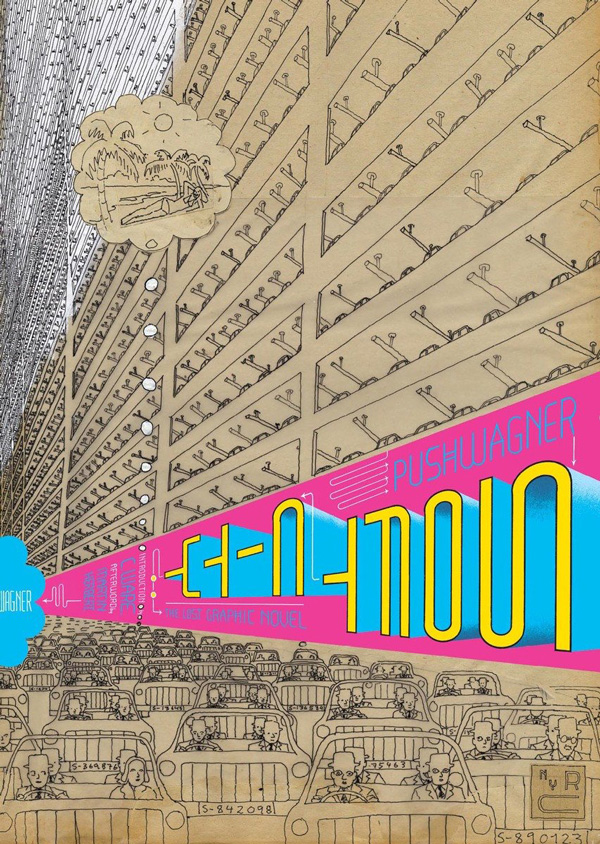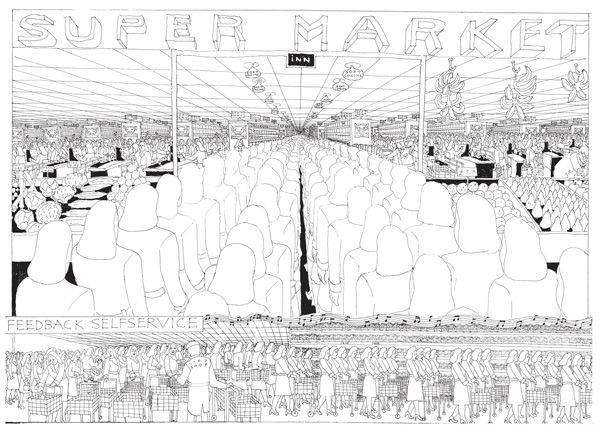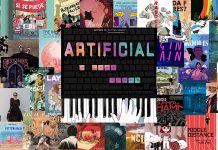To take Soft City at face value, there are some very simple lessons to learn from Norwegian artist Hariton Pushwagner. Everything is the same. There is no one thing. Life is not an adventure. In dissecting a day in the life of a city, Pushwagner presents reveals the process of waking up, commuting, sitting at work, going home, having dinner, and going to bed not as an individual series of actions, but as the ritual of crowds that make up a super-organism.
Much has been made of the dystopian quality of Soft City, and while it’s certainly there and obviously intentional, to push that point is to pretend that Soft City is some sort of prognostication, that it’s not actually describing an existence that we have already arrived at. In fact, Soft City is a presentation of our longstanding now, which we now see slowly crumbling apart in relation to the more pure version of it that must have existed in 1969, when this book was first created.
The story, such as it is, opens with a small child waking up, excited by what the world has to offer that day. The rest of the story, however, reveals that the only thing on offer is repetition and sameness, a mapped out process that has been repeated hundreds of times by hundreds of people because that is what you do. The citizens of the city moving through the processes together reveal that humans are little more than the tissue and organs of cities and societies, that the movement of crowds — in unison to create the action in the world — is what makes history, or, more in this case, ignores it.
We do see an indication of the world outside the city, through the screens in the workplace. It’s a militarized fantasyland that the workers tune into, a place of war, and therefore adventure, that infects they daydreaming in their cars on the way home. Dreams of mechanized violence are so intense that they don’t even notice the admittedly isolated version of it in their own city. One guy being attacked next to a traffic jam is not enough to jolt them out of their process.
Pushwagner’s world is wrought in intricate line drawings that show little variation in textures or intensity, but create repetitive webs of human existence on the page.
Soft City has been in stasis since the mid-Seventies, the victim of being overlooked as well as legal wrangling, though it finally saw light in Norway in 2008. This New York Review Comics edition is as elegant as any of their releases, and about as European as it gets. Soft City marks a return to the original conception of “robots” as workers, as it was evoked by Czech playwright Karel Čapek in 1920. As a work that now exists in the post-truth Trump era, it suggests that we live in an illusion of individuality, that we are all parts of a machine that keeps the mechanism of the world moving along as it already does, and that any individual efforts are ultimately too small to make a difference. Individuality and hope is something that is weened out of us as we grow to join the super-organism.
Is this a bleak vision of reality? Maybe. I’m not so sure that much exists in the world to counter how Pushwagner lays it out there, though, and forcing any of us to question our own roles in the mechanism is not such a bad thing.









That looks great, wish you had more page samples.
Comments are closed.